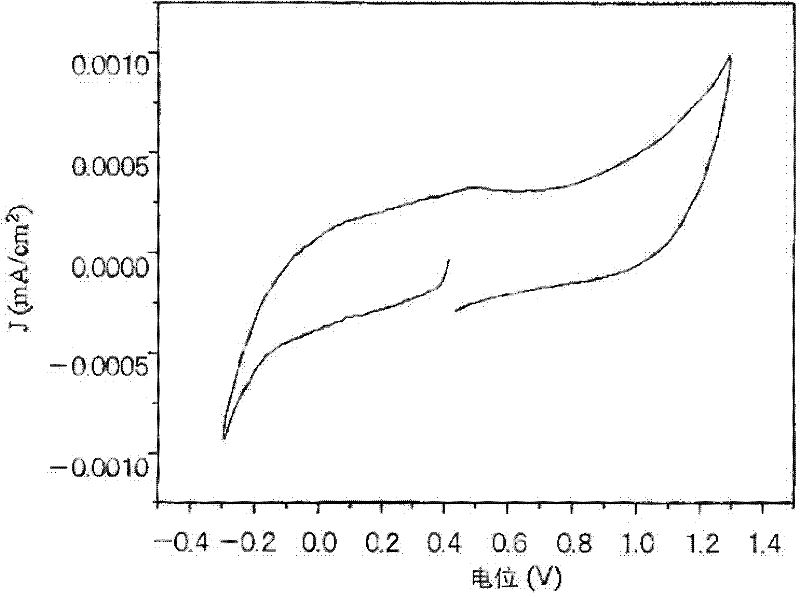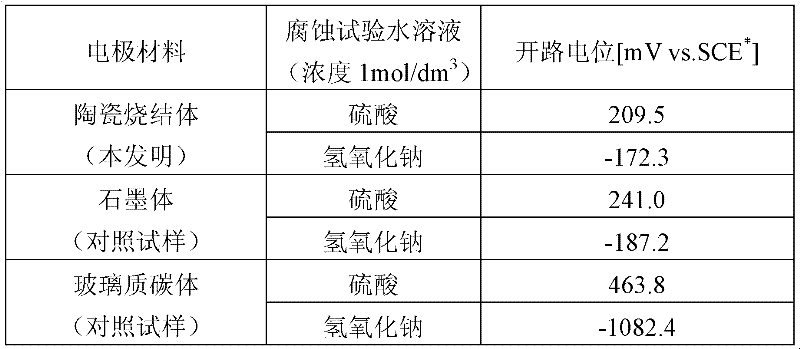Ceramic electrode material and process for producing the ceramic electrode material
A technology of ceramic electrodes and manufacturing methods, which can be applied to ceramic products, cable/conductor manufacturing, electrodes, etc., and can solve problems such as remaining problems in processability
- Summary
- Abstract
- Description
- Claims
- Application Information
AI Technical Summary
Problems solved by technology
Method used
Image
Examples
Embodiment 1
[0071] First, alumina powder (Sinterable alumina manufactured by Showa Denko Co., Ltd., AL-160SG-4, average particle size: 0.6 μm) as a ceramic raw material, methacrylamide as a polymerizable substance, and N, N'-methylene bisacrylamide as a dispersant, ammonium polycarboxylate dispersant (CELUNAD305, manufactured by Chukyo Oil & Fat Co., Ltd.) and distilled water as a dispersant. Blending was carried out to prepare a water slurry composition. In addition, the preparation of the composition was carried out as follows: First, methacrylamide and N,N'-methylenebisacrylamide were dissolved in distilled water, then polycarboxylate ammonium-based dispersant was added, and then After the alumina powder was prepared, it was mixed for 25 hours in a constant temperature water tank set at 25° C. using a wet ball mill.
[0072] [Table 1]
[0073] Slurry composition table (combined amount relative to 100g of slurry)
[0074]
Dispersant...
experiment example
[0080] After adding 1.03 mg of a polymerization initiator and 0.17 mg of a polymerization catalyst to 100 g of the above composition, an appropriate amount of the composition to which the above polymerization initiator was added was supplied to a disc-shaped (diameter 5 cm x thickness 1 cm) molding die . The methacrylamide and N,N'-methylenebisacrylamide contained in the composition were polymerized by leaving these molding dies in a room (temperature: 25° C.) for 3.0 hours, and then by removing them from the molding dies, mold to obtain a disc-shaped molded body.
[0081] The obtained molded article was placed in a room of a constant humidity dryer, and dried for 3 days until the relative humidity in the room was lowered from 90% RH to 60% RH at a rate of 10% RH per day. After the drying, the dried molded body was reduced and fired at a temperature of 1700° C. for 2 hours while introducing argon gas using a small electric furnace set in an argon atmosphere to obtain a cerami...
Embodiment 2
[0094] First, alumina powder (Sinterable alumina manufactured by Showa Denko Co., Ltd., AL-160SG-4, average particle size: 0.6 μm) as a ceramic raw material, methacrylamide as a polymerizable substance, and N, N'-methylenebisacrylamide as a permanent monomer, ammonium polycarboxylate dispersant (CELUNAD305, manufactured by Chukyo Oil & Fat Co., Ltd.) as a dispersant, and distilled water. Blending was carried out to prepare a water slurry composition. In addition, the preparation of the composition was carried out as follows: First, methacrylamide and N,N'-methylenebisacrylamide were dissolved in distilled water, then polycarboxylate ammonium-based dispersant was added, and then After adding the alumina powder, the mixture was mixed for 25 hours in a constant temperature water tank set at 25° C. using a wet ball mill.
[0095] [Table 4]
[0096] Slurry composition table (combined amount relative to 100g of slurry)
[0097]
Alumina powder
distilled water
...
PUM
| Property | Measurement | Unit |
|---|---|---|
| electrical resistivity | aaaaa | aaaaa |
| particle size | aaaaa | aaaaa |
| particle size | aaaaa | aaaaa |
Abstract
Description
Claims
Application Information
 Login to View More
Login to View More - R&D Engineer
- R&D Manager
- IP Professional
- Industry Leading Data Capabilities
- Powerful AI technology
- Patent DNA Extraction
Browse by: Latest US Patents, China's latest patents, Technical Efficacy Thesaurus, Application Domain, Technology Topic, Popular Technical Reports.
© 2024 PatSnap. All rights reserved.Legal|Privacy policy|Modern Slavery Act Transparency Statement|Sitemap|About US| Contact US: help@patsnap.com










